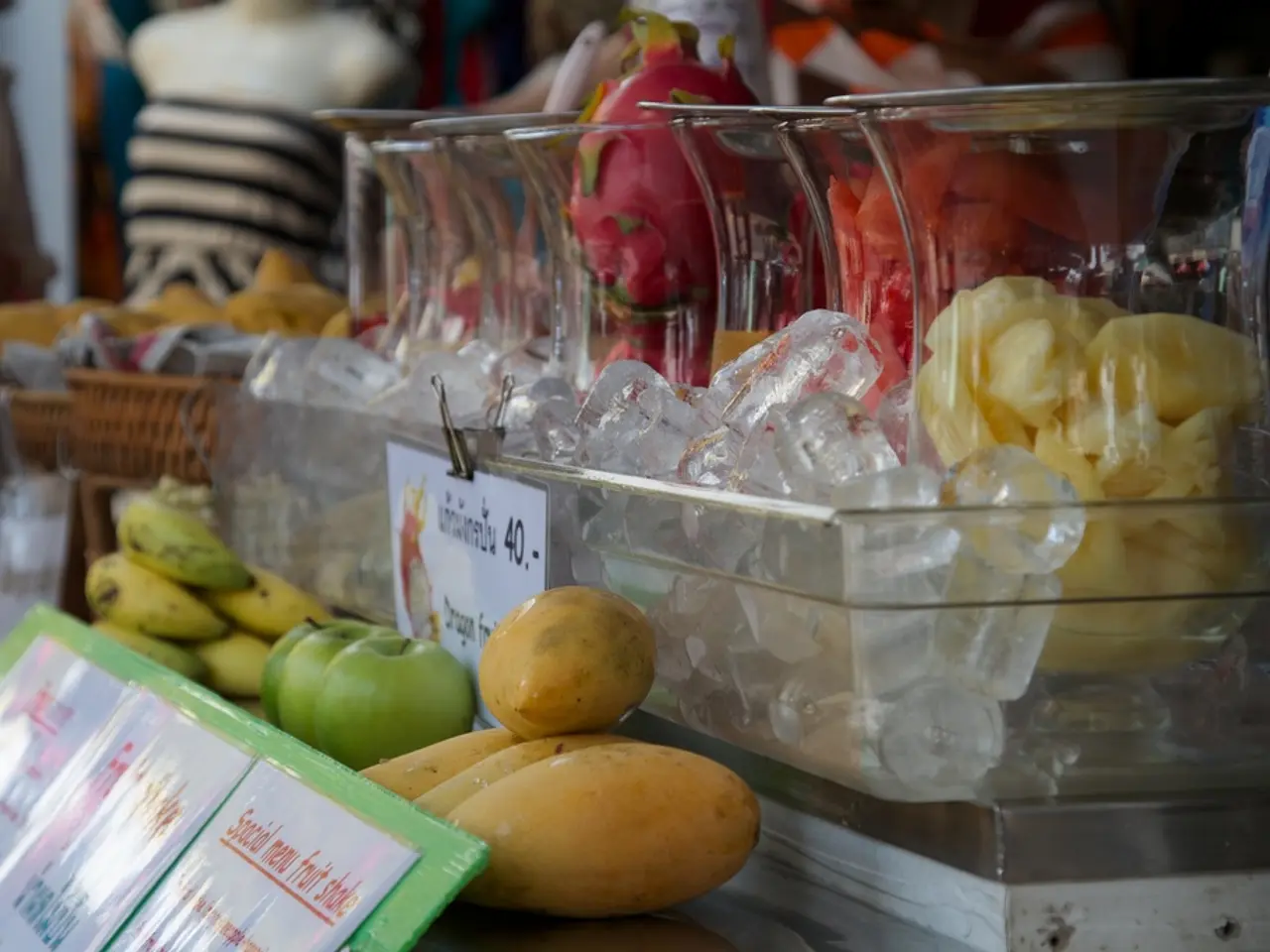Preserve Your Summer Bounty: 10 Strategies for Frozen Garden Goods
Preserving Summer's Bounty: A Guide to Freezing Fruits and Vegetables
In the heart of summer, it's natural to want to savour the abundance of fresh fruits and vegetables. But what if you could enjoy them all year round? Here's a guide to freezing summer produce for later use, based on best practices from the Federal Center for Nutrition (BZfE) and the magazine "Öko-Test".
Blanching for Best Results
Blanching vegetables before freezing is a must. This process involves immersing vegetables in boiling water or steam, then rapidly cooling them in ice water. Blanching deactivates enzymes that cause loss of color, texture, and nutrients, and reduces microbial growth.
Freezing Zucchini: A Special Case
When it comes to freezing zucchini, salting can help draw out excess moisture before freezing raw. However, blanching is generally recommended to maintain quality. Salting alone is less common but may work if moisture removal is effective and vegetables are dried well before freezing.
Individual Freezing for Berries
Berries should be frozen individually to prevent clumping and allow easy portioning later. Spread them in a single layer on a tray and freeze until firm before transferring to storage containers or bags.
Ice Cube Trays for Herbs
Fresh herbs can be preserved well by freezing them in ice cube trays. Chop them up, place them in the trays, cover with water or oil, and freeze. Once frozen, transfer the cubes to freezer bags.
Packaging and Portioning
Produce should be stored in airtight, freezer-safe containers or heavy-duty freezer bags to prevent freezer burn and preserve quality. Packaging in small quantities facilitates quicker freezing and easier thawing, preventing waste and maintaining texture.
Avoid Thawing Before Use
Do not refreeze produce once thawed as this compromises texture and quality. Thaw only what is needed.
Organize Your Freezer
Label packages with the date, arrange items so older packages are used first, keep the freezer at 0°F (-18°C) for optimal preservation, and avoid frequent opening to maintain stable temperature.
Additional Tips
Fruits may benefit from pretreatments such as dipping in ascorbic acid or packing in sugar syrup to prevent browning and preserve flavor. Vegetables with higher moisture content (e.g., cucumbers, squash) do not freeze well raw but can be frozen after blanching, or used in cooked preparations once thawed. Use frozen fruits and vegetables within 8 to 12 months for best quality.
By following these practices, you can ensure maximum retention of flavor, nutrients, texture, and safety when freezing summer fruits and vegetables. Happy freezing!
[1] Federal Center for Nutrition (BZfE) [2] Öko-Test [3] USDA Food Safety and Inspection Service [4] National Center for Home Food Preservation [5] The Spruce Eats
- Embrace a sustainable lifestyle by adopting healthy cooking methods like freezing summer's bounty for a year-round enjoyment of food-and-drink and home-and-garden produce.
- Transform your cooking lifestyle by experimenting with global cuisines, using your newly froze fruits and vegetables as ingredients for your culinary adventures.
- Enhance your home improvement projects with a well-organized home-and-garden, where fresh herbs from the freezer can be added to various dishes, promoting a healthier living space.
- Take your gardening hobby to the next level by preserving an array of fruits and vegetables through freezing, opening the door to innovative ideas for food-and-drink dishes in your home and garden.
- As you delve into the world of sustainable living, remember to utilize various preservation techniques, such as blanching and freezing, to ensure that summer's bounty is always within arm's reach, regardless of the season.




